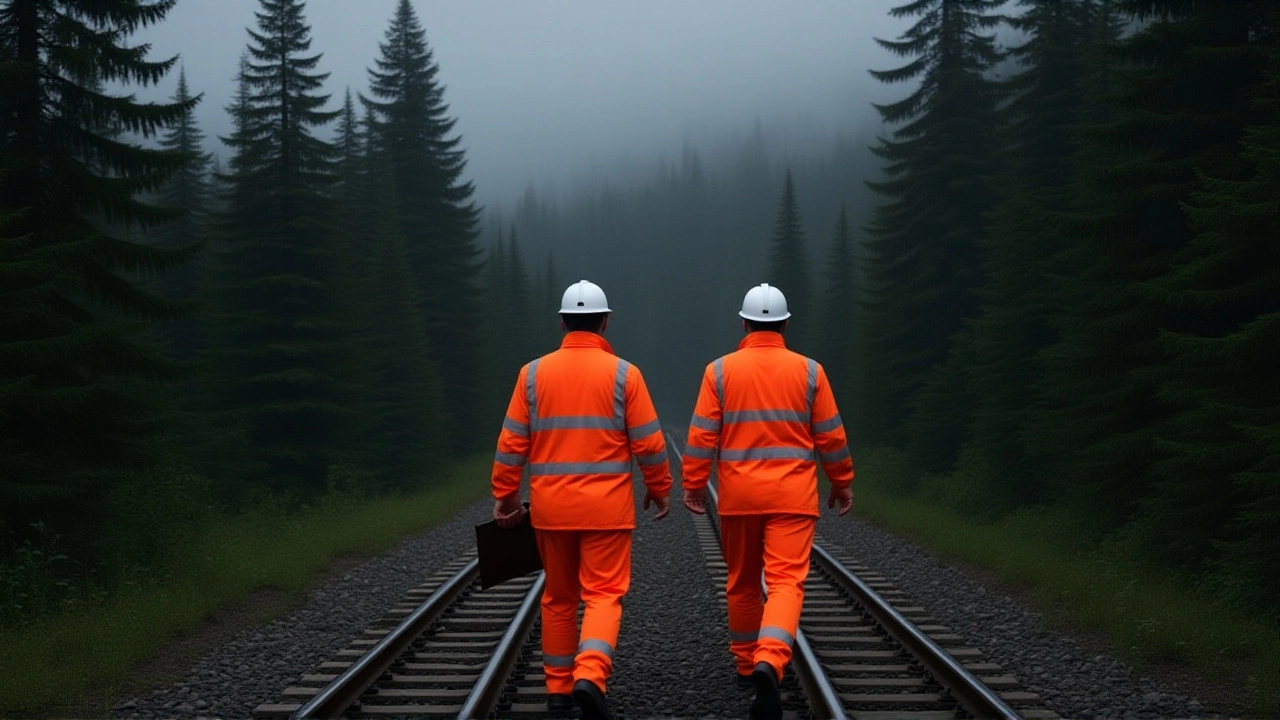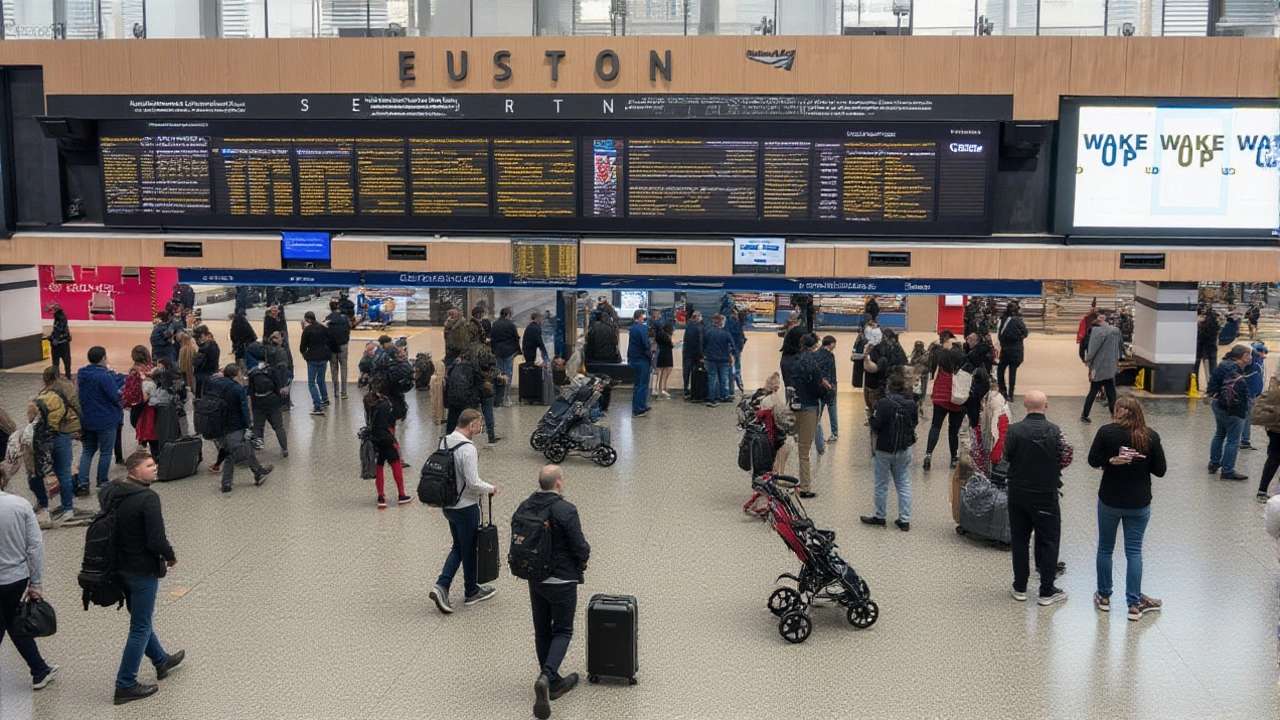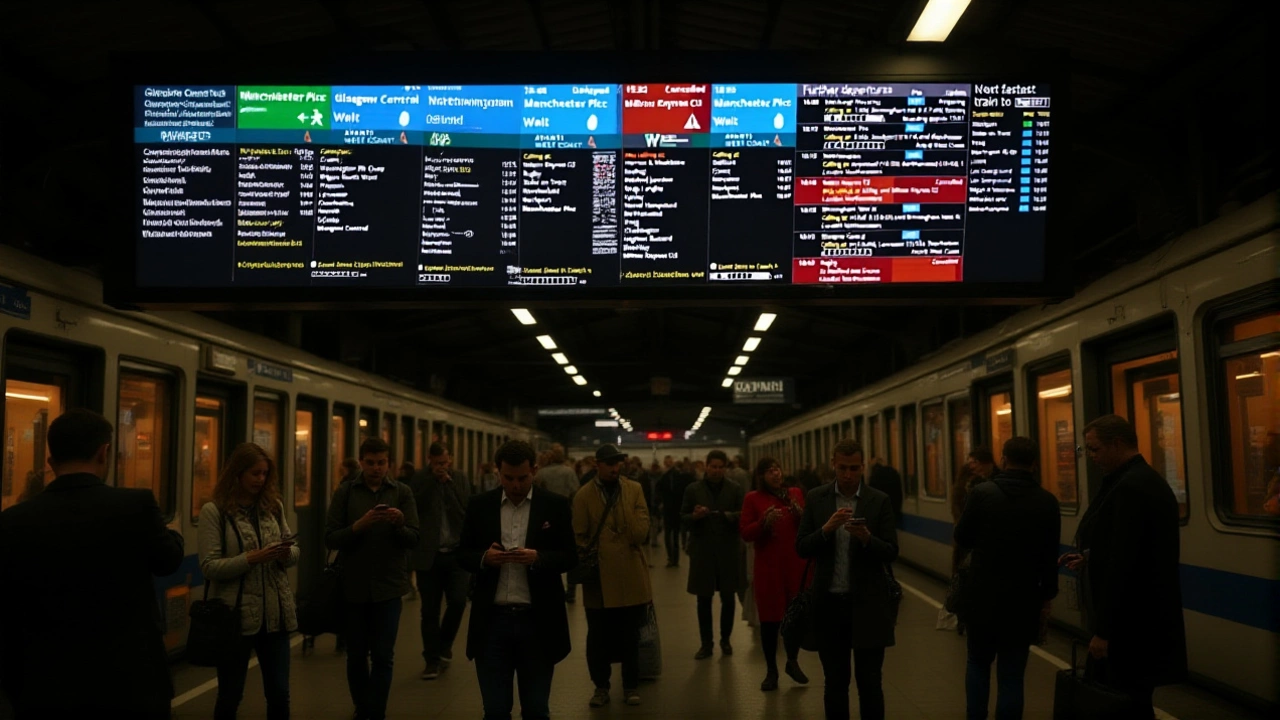By 07:52 UTC on Saturday, 22 November 2025, the morning commute into London Euston had ground to a halt—not from a signal failure or mechanical breakdown, but from something far more preventable: an unauthorized person on the tracks between Watford Junction and London Euston. The result? A complete line closure, safety sweeps, and a cascade of delays that rippled across the UK’s rail network. Even after lines reopened at 08:15 UTC, passengers were told to expect delays of up to 20 minutes until 09:15 UTC. Residual delays like these aren’t just inconvenient—they’re a reminder of how fragile rail infrastructure remains when human behavior disrupts systems designed for precision.
How One Trespasser Disrupted a National Network
It’s not unusual for trespass incidents to trigger safety protocols. Rail operators are legally required to halt services when someone enters a restricted zone, no matter the intent. But this one hit at the worst possible time: Saturday morning, when commuters, weekend travelers, and long-distance passengers were all converging on London Euston. The station, a major hub on Euston Road in the London Borough of Camden, serves as the northern gateway for trains from the Midlands, North West, and Scotland. By 08:15 UTC, Network Rail engineers confirmed the track was clear and signaling systems were restored. But recovery isn’t instant. Trains need to be repositioned, schedules rebalanced, and platforms cleared of stranded passengers. That’s why, even after reopening, National Rail warned of lingering delays. The official notice, posted on their service disruption portal and echoed on social media under #LondonEuston, was blunt: "Trains running between these stations may continue to be delayed by up to 20 minutes. Disruption is expected until 09:15."Who Got Hit the Hardest?
The impact wasn’t isolated. Three major operators bore the brunt:- Avanti West Coast—serving routes from Edinburgh Waverley, Glasgow Central, Manchester Piccadilly, and Liverpool Lime Street—saw all services delayed or canceled.
- London Northwestern Railway, which handles regional commutes to Milton Keynes Central, Northampton, and Crewe, faced cascading knock-ons.
- London Overground—the suburban lifeline between Watford Junction and London Euston—was directly affected, with many passengers stranded at intermediate stops like Tring and Bletchley.
That’s more than 15 major destinations across England, Wales, and Scotland—all tangled in a web spun by a single trespasser. No executive was named. No emergency services were quoted. Just a cold, factual update from National Rail, the umbrella body managed by the Rail Delivery Group, which coordinates communication across 20+ train operators.

Compensation? Yes. But It’s Not Automatic
Passengers aren’t left empty-handed. National Rail confirmed eligibility for the industry-wide Delay Repay scheme. If your journey was delayed by 15 minutes or more, you can claim compensation. But here’s the catch: you need to keep your ticket—physical or digital—and document your scheduled and actual departure times. Each operator sets its own payout rules. Avanti West Coast, for instance, offers 25% of the fare for 15–29 minute delays, rising to 50% for 30–59 minutes. London Northwestern Railway follows similar tiers.What’s frustrating? The system relies on passenger initiative. No emails. No SMS alerts. Just a notice buried in a website and a hashtag. Many travelers, especially those unfamiliar with the process, will miss out. "It’s like being told you won a prize but have to find the receipt yourself," said one commuter on X, who was delayed for 37 minutes trying to reach Birmingham New Street.
Why This Keeps Happening
There’s no data in the official notice about how often trespass incidents occur on this stretch. But anecdotal evidence suggests they’re increasing. In 2023, Network Rail recorded over 1,200 trespass incidents across the UK rail network—up 17% from 2020. Many occur near urban stations like Watford Junction, where tracks run close to footpaths and residential areas. Fences are patched, signage is posted, but enforcement remains reactive, not preventive.It’s not just about safety—it’s about economics. A single 20-minute delay on this corridor can cost operators upward of £150,000 in lost revenue, staff overtime, and compensation payouts. And that’s before you factor in the ripple effect on connections to Heathrow, Eurostar, and the Underground.

What Comes Next?
By 09:15 UTC, service returned to normal. But the underlying issue remains. Rail operators are exploring AI-powered CCTV monitoring and drone patrols along high-risk corridors. Some have proposed tighter penalties for trespassing—currently, it’s a £1,000 fine, but rarely enforced. Meanwhile, passengers are left to navigate a system that’s efficient until it isn’t.For now, the advice is simple: check your journey before you leave. Use the National Rail Enquiries Journey Planner. Keep your ticket. And maybe, just maybe, think twice before stepping onto the tracks—even if you think you’re just taking a shortcut.
Frequently Asked Questions
How long were delays expected to last between Watford Junction and London Euston on 22 November 2025?
Delays of up to 20 minutes were expected between Watford Junction and London Euston until 09:15 UTC on 22 November 2025, even after tracks reopened at 08:15 UTC. This lag occurred because train schedules needed rebalancing, platforms cleared, and queued services gradually resumed—typical after a safety-related line closure.
Which train operators were affected by the disruption?
Three operators were impacted: Avanti West Coast (intercity routes to Scotland and the North West), London Northwestern Railway (regional services to Milton Keynes, Northampton, and Crewe), and London Overground (Watford Junction to London Euston). Together, they serve over 15 major stations across England, Wales, and Scotland.
Am I eligible for compensation if I was delayed?
Yes—if your journey was delayed by 15 minutes or more, you qualify for Delay Repay compensation. You must retain your ticket and record your scheduled and actual departure times. Each operator sets its own payout rates, typically ranging from 25% to 50% of the fare, depending on delay length.
Why didn’t National Rail name the person responsible?
Rail operators rarely disclose individual identities in public notices unless a criminal investigation is underway. The focus is on service recovery and passenger safety. Identifying trespassers is handled internally by Network Rail’s security team and may lead to fines or prosecution, but details are not shared publicly.
How common are trespass incidents on UK rail lines?
Over 1,200 trespass incidents were recorded across the UK rail network in 2023—a 17% increase since 2020. Urban stations like Watford Junction, with tracks near footpaths, are particularly vulnerable. Most are not malicious but still trigger mandatory safety stops that disrupt thousands of journeys.
What can passengers do to avoid disruption?
Always check the National Rail Enquiries Journey Planner before traveling, especially during peak hours. Sign up for real-time alerts via email or app. If delays occur, keep your ticket and note your scheduled vs. actual times—these are essential for any Delay Repay claim.
